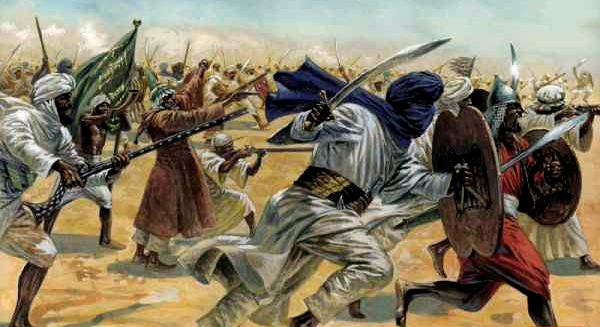750 Battle of the Zab River
After the death of Muhammed in 632, the Islamic world was ruled by a series of caliphs, or successors, in whom were invested both secular and religious power. In 661 the governor of Syria, Muawiyah, declared himself caliph and established a dynasty, the Umayyads, who ruled from Damascus. The Umayyads continued the Islamic project of conquest, pressing east into central Asia and into Europe, conquering Spain, creating an empire that contains almost 30% of the world’s population and millions of square miles.
By 750 the dynasty had grown corrupt and unpopular; its provincial governors were rebellious and felt little loyalty to the regime in Syria. A faction, the Abbasids who claimed descent from the family of Muhammed, led an uprising and at the Battle of the Zab River in what is now Iraq, defeated the Umayyad army. A new dynasty was established with its capital in Baghdad and remaining members of the previous regime were hunted down and killed. One Umayyad prince, however, survived and made his way to Spain where his followers would establish a rival caliphate at Cordoba.
Culturally the Abbasid rule was the high point of Islamic civilization. Its destruction in 1250 by the Mongols led to an intellectual and artistic decline in the Islamic world.
